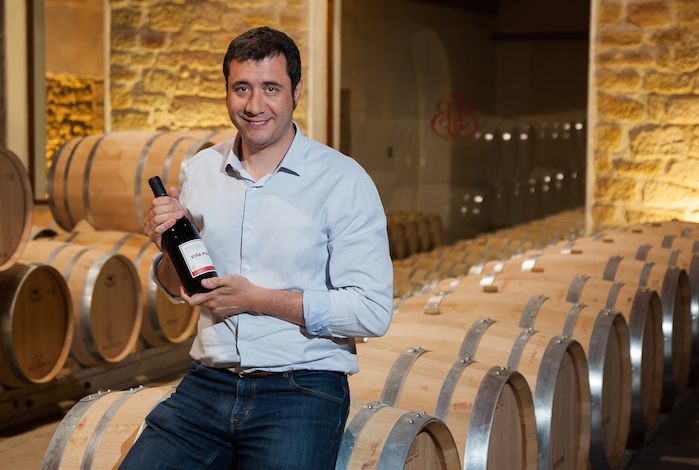Diego Pinilla’s new job requires working with wine across continents. Earlier in August he was named the new Chief Winemaker for the Codorníu Raventós Group. This gives Pinilla oversight of the group’s ten global wineries in Spain (Bilbaínas, Legaris, Scala Dei, Raimat, Bach, Nuviana, Abdias de Poblet and Codorníu Wineries), Napa Valley (Artesa) and Argentina (Septima).
How will he balance this newfound responsibility for vineyards separated by oceans? By relying on what has already brought him success in winemaking, he says. Pinilla previously served as Technical Manager of Bodegas Bilbaínas, where his achievements included a comprehensive terroir survey in support of vineyard-driven wines.
We recently spoke with Pinilla about his new position.
BD: Congrats on your promotion. What are you looking to accomplish in your new role?
Diego Pinilla: What we really want to do is show the expression of each of those estates. It’s the same thing for any winery: keep developing the expression of its terroir. At the same time, we have to make sure that we keep looking for new developments, and that we’re making better wines every day in every range that we make.
BD: How do you balance that across 10 wineries in three countries?
DP: The reality is that every winery has its own philosophy. But we can still share lessons, knowledge and techniques across wineries as a group. And that way we can improve vintage after vintage. But we’re not trying to make the same wines in different spots. We’re making different wines in each of their own, individual spots.

 BD: Can you share an example of a lesson or technique that was shared across the group?
BD: Can you share an example of a lesson or technique that was shared across the group?
DP: About two years ago — at one of our wineries, I can’t remember which — we started doing fermentation in bigger barrels. Most wineries do their fermentation in 275-L. barrels. But after a few trials, we started using 500-L. barrels. We believe that this gives us better control of the temperature. And this keeps the wine richer and more balanced. So we changed all of our wineries over to 500-L. barrels for fermentation. Little by little, we make better wines.
BD: What is your philosophy for making better wines?
DP: Presently, instead of using more technique, we’re trying to make wines that are less about the winemakers, and more reflective of the fruit.
For instance, in this next harvest for cava in Spain, we’re running trials of fermentation without as much temperature control. The big thing in winemaking over the past 30 years has been temperature control, but we’re trying to reduce winemaker management to make wines that are richer and better. Obviously we’re still going to control the temperature to some degree, but what we don’t want to do is make the same wines as everyone else.
Also, we’re using more natural fermentation. We’re doing this to try to make wines that better express their fruit and character.
 BD: What do U.S consumers want from Spanish wine?
BD: What do U.S consumers want from Spanish wine?
DP: I think that, somehow, Spanish wine still isn’t that well known in America. But what Americans are looking for are wines that are approachable and fruiter. In general, something that is well balanced and approachable from a price point. Wines that have their own personality.
With traditional cava and Rioja wines, not only do you get approachable wines, but also wines that reflect the right philosophy and history. We’ve been doing this in Spain for quite some time. There’s a lot of history here. Spain in general has very approachable wines, but also a great high-end as well.
Our challenge now is to convince U.S. consumers to try Spanish wines, and convince them that these wines are among the best in the world. Tempranillo, cava, Rioja, I need to steer U.S. drinkers towards those.
BD: What about Argentina?
DP: Argentinian Malbec has been one of the latest big things in America. Last year has been terrific. Fifteen to thirty years ago, these wines of Argentina were not as good, but today they are a great expression of Malbec. The U.S. consumer already knows this. Now they need to try the other great Argentinian wines.
Kyle Swartz is associate editor of Beverage Dynamics magazine. Reach him at kswartz@epgmediallc.com




